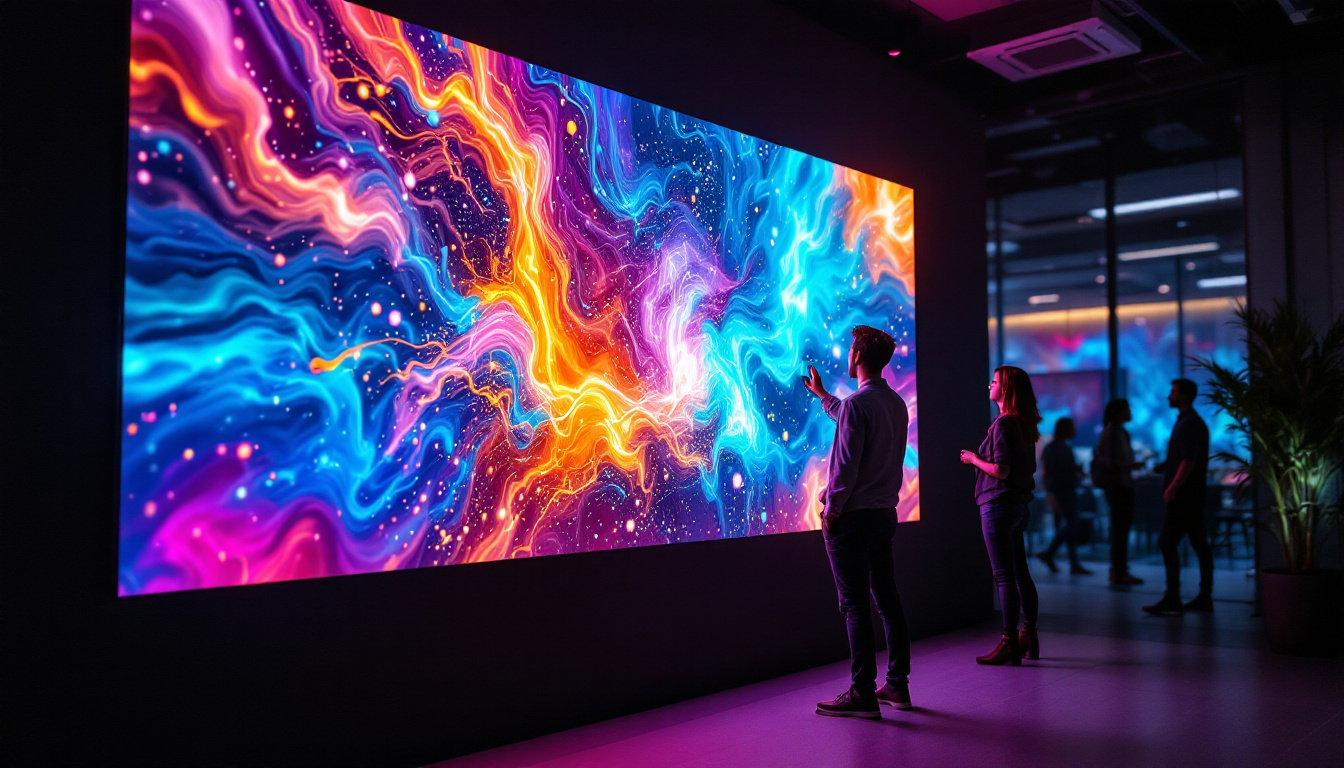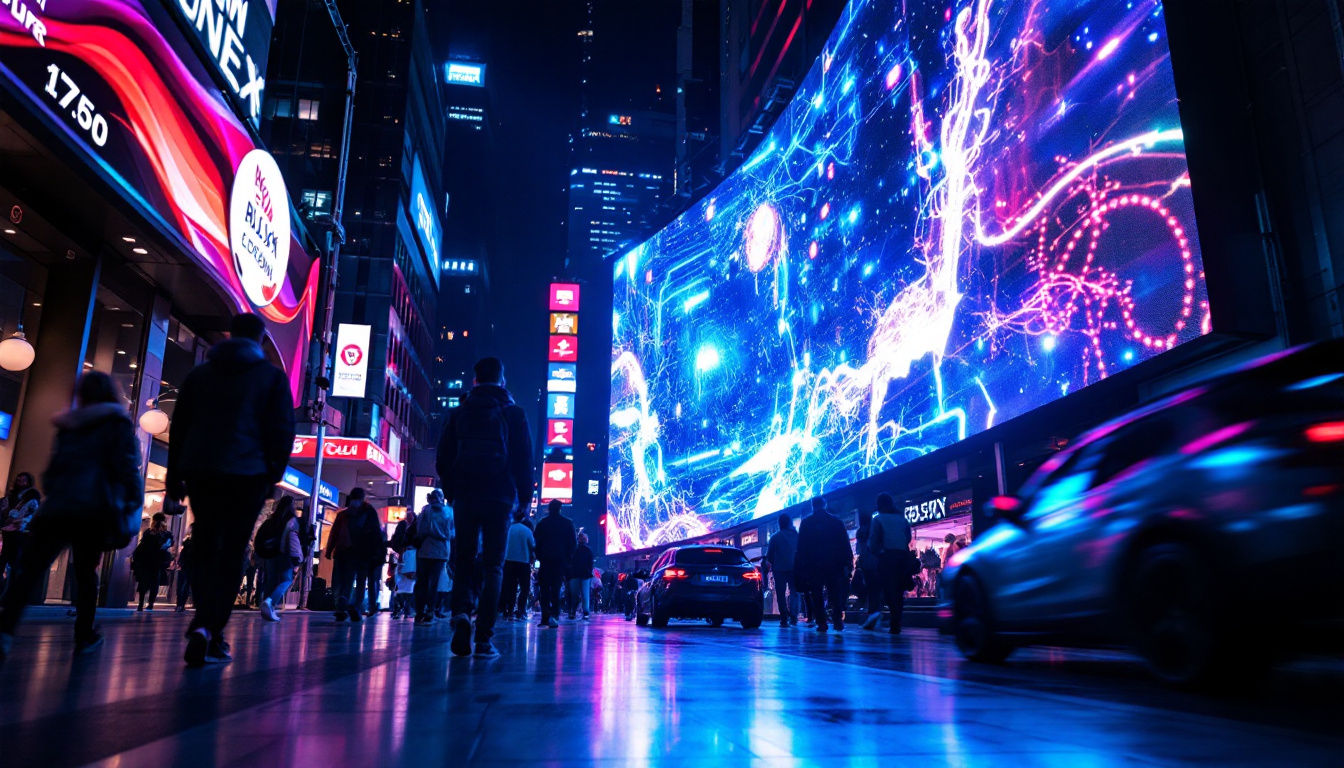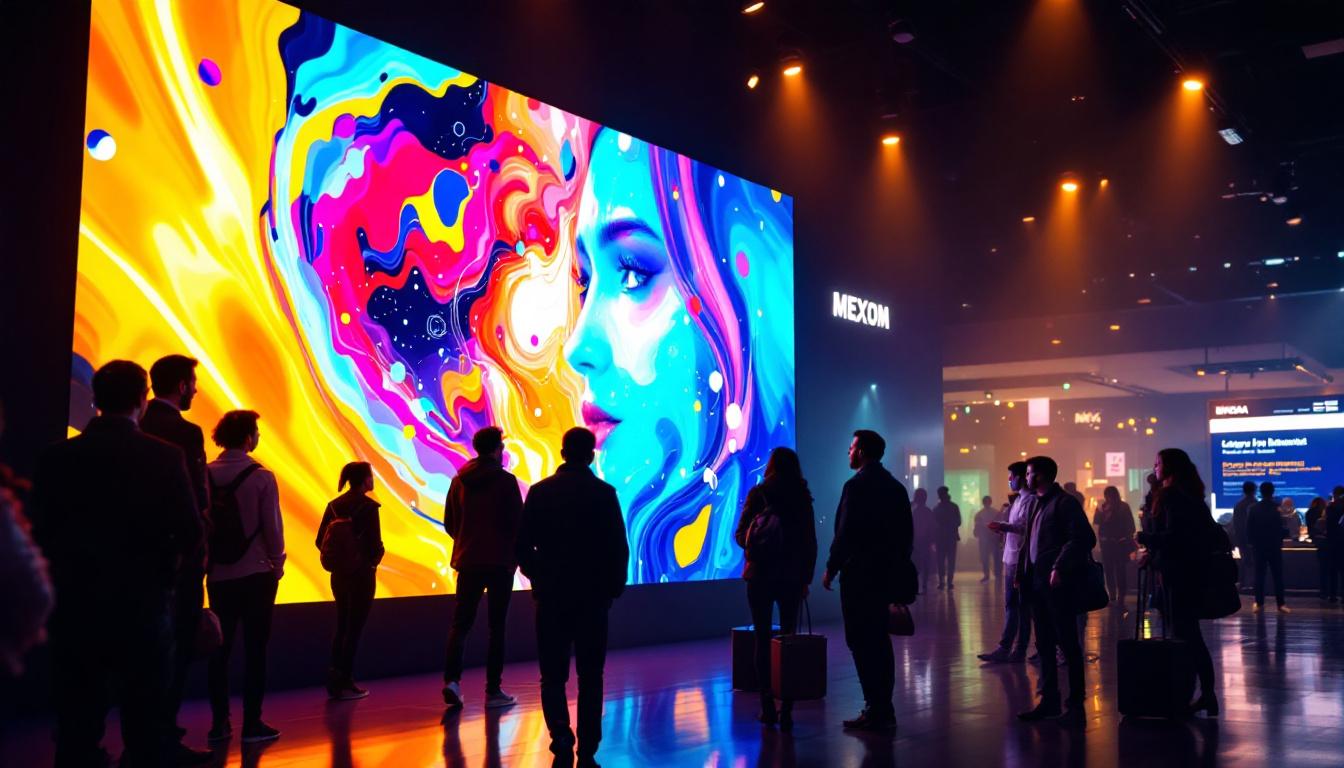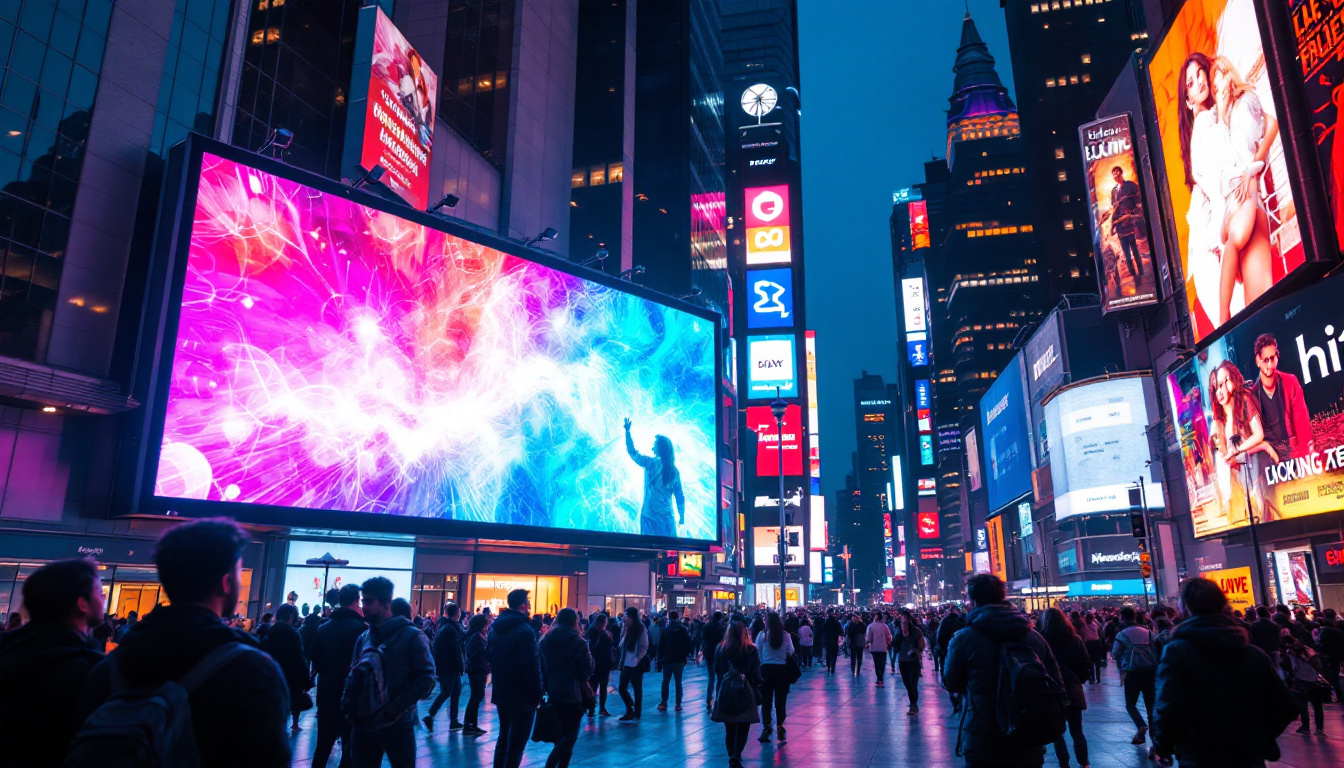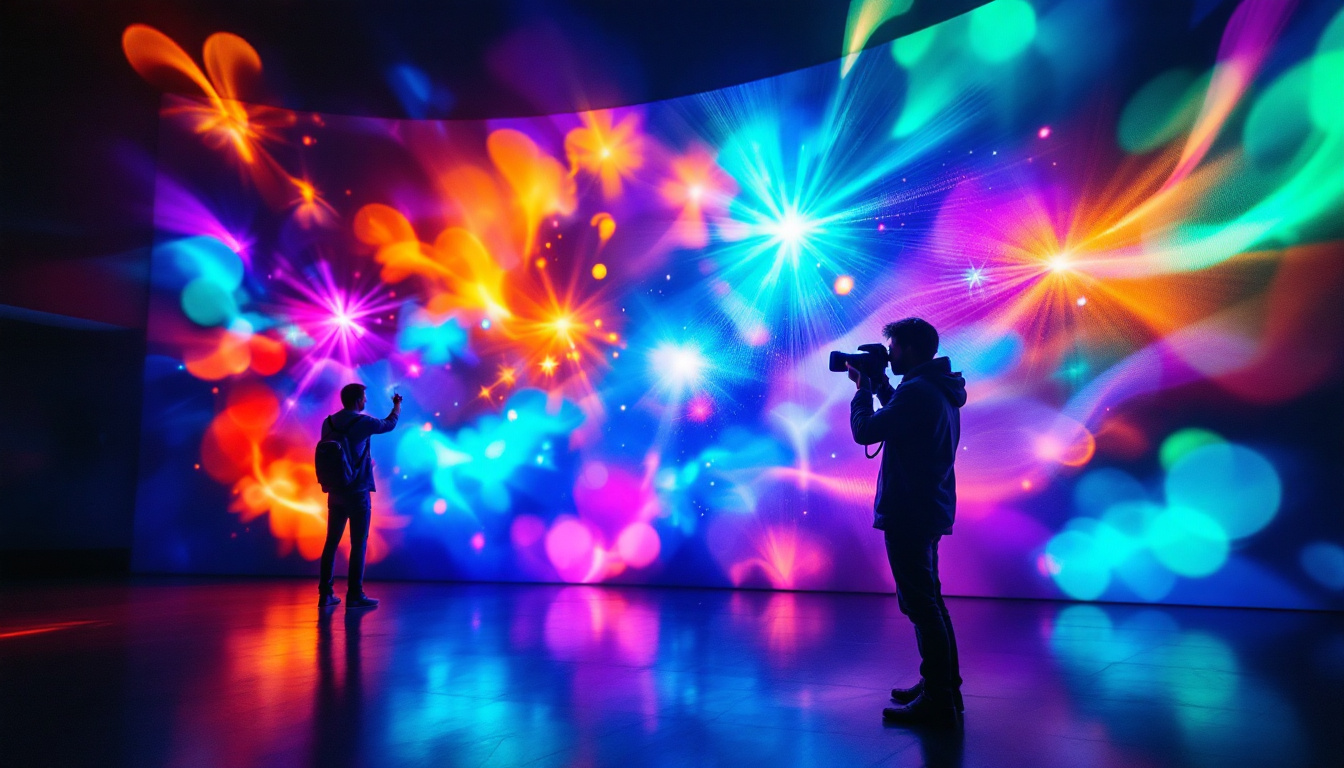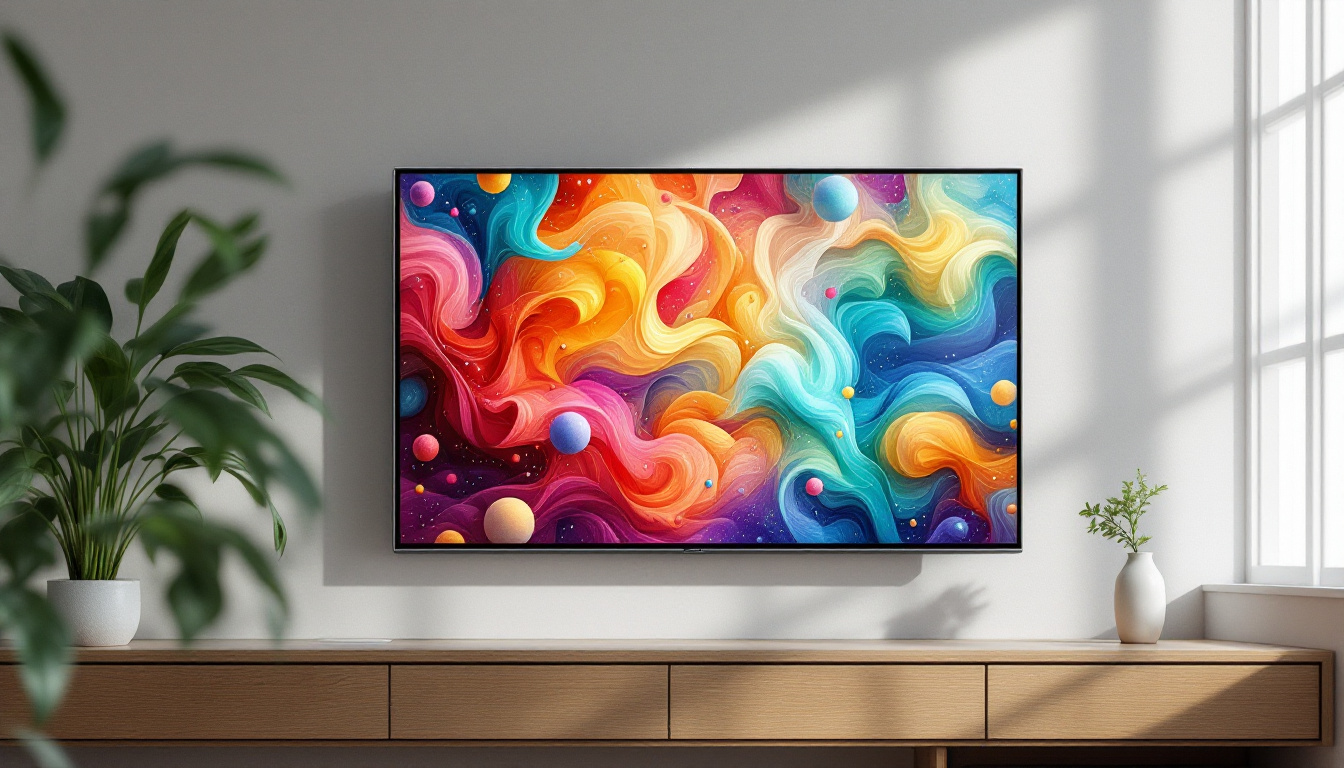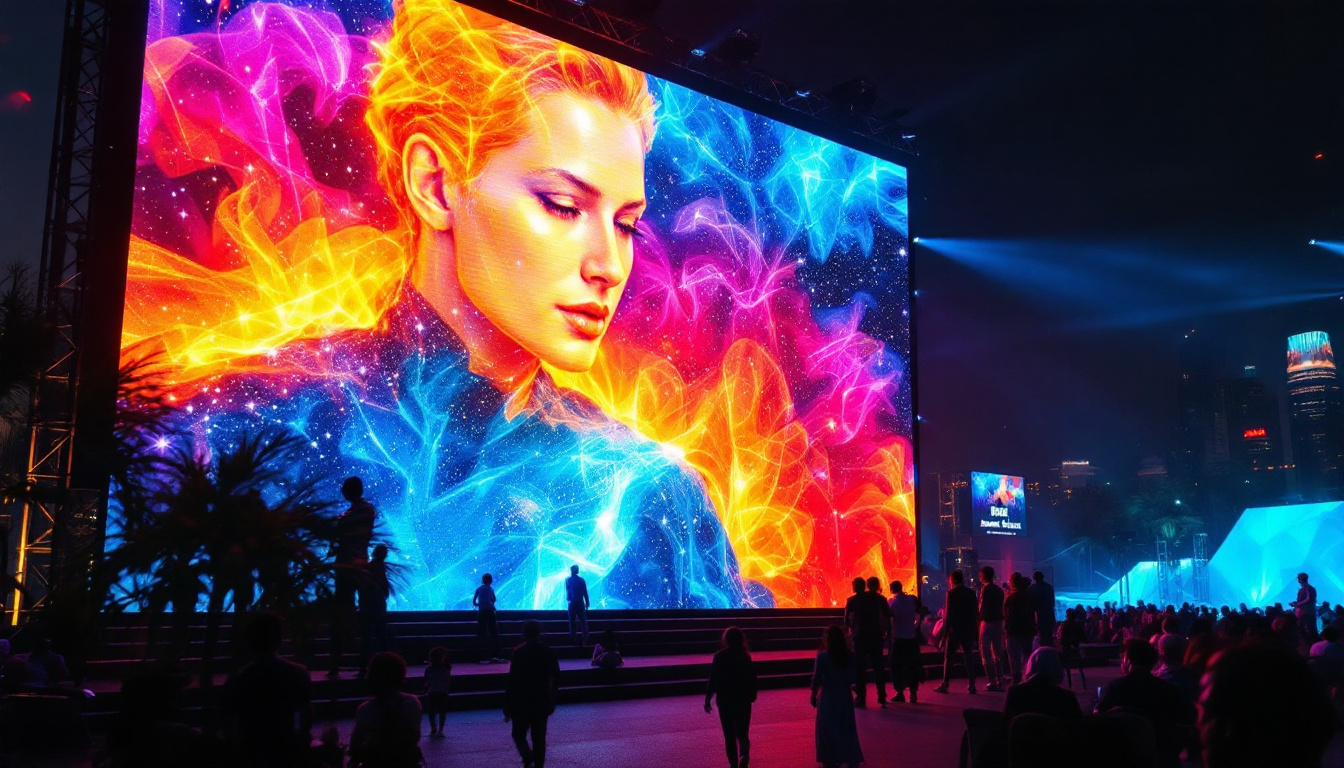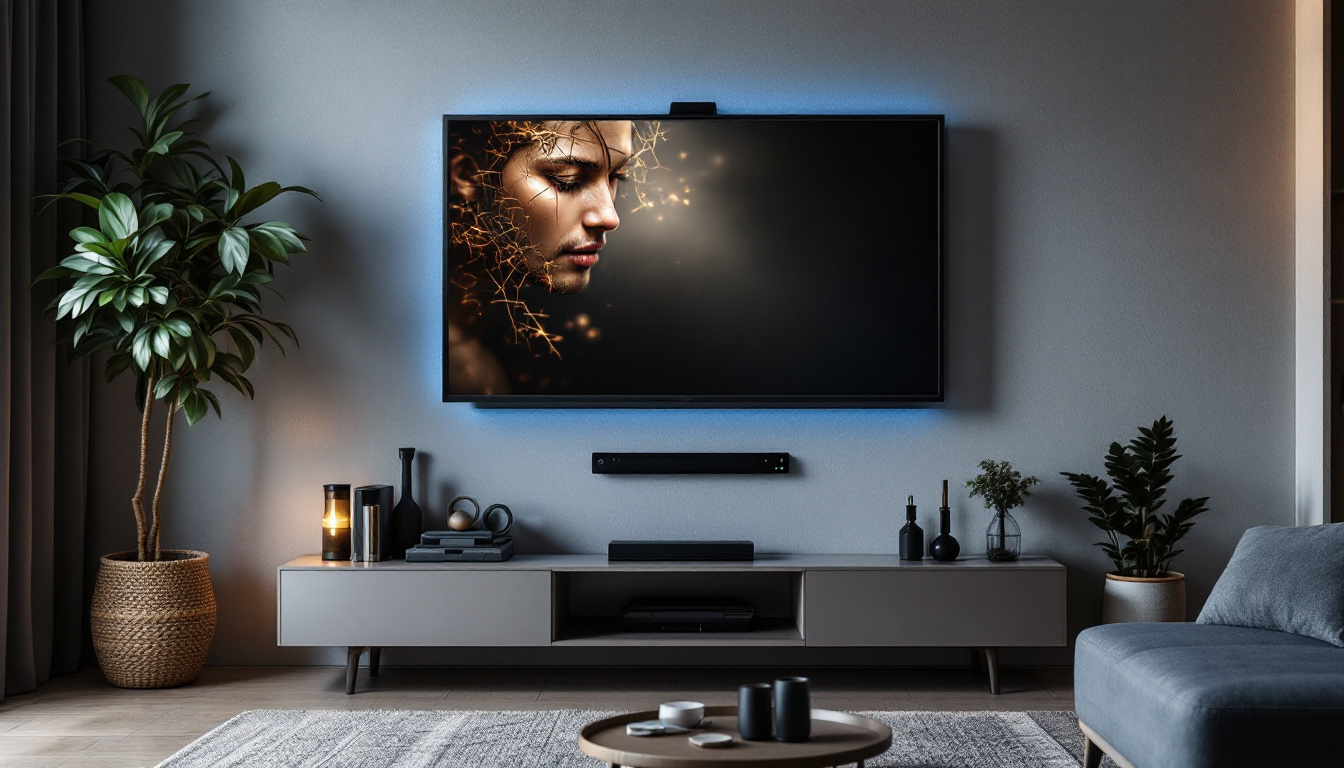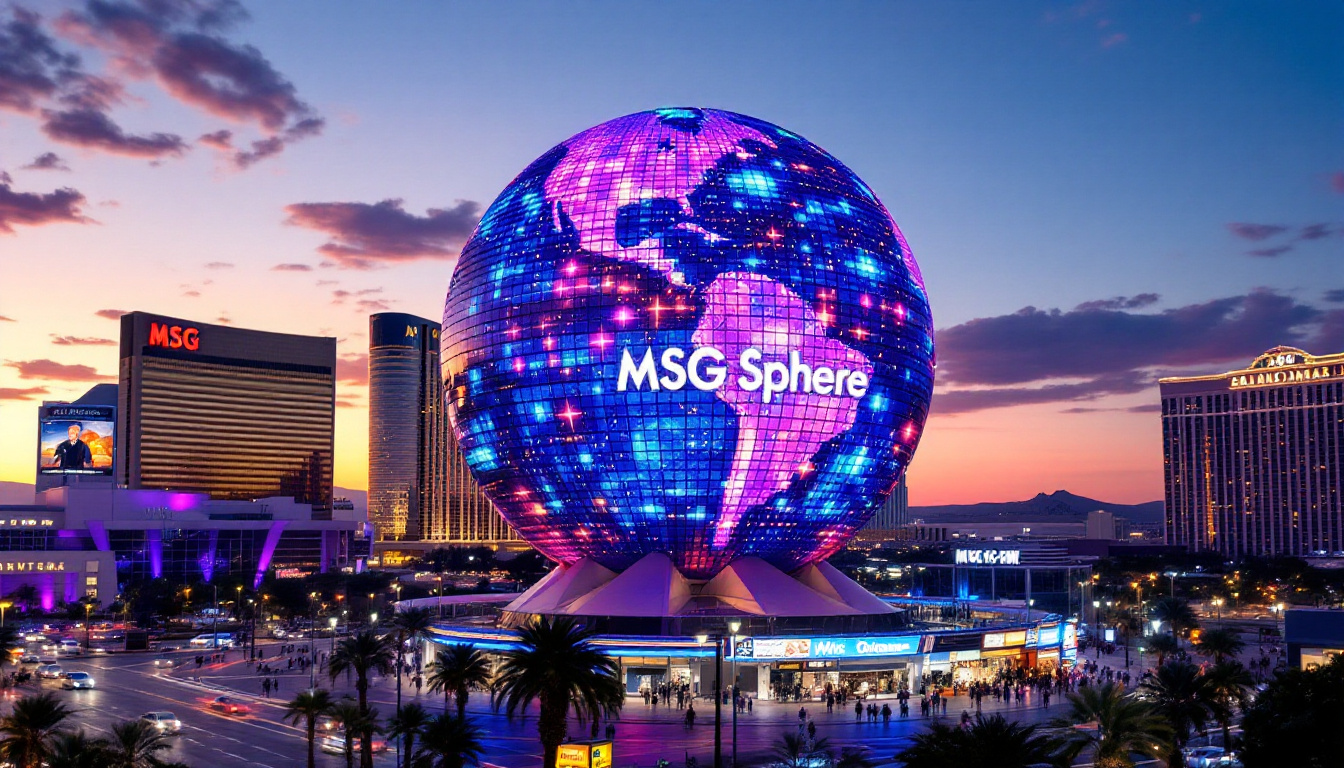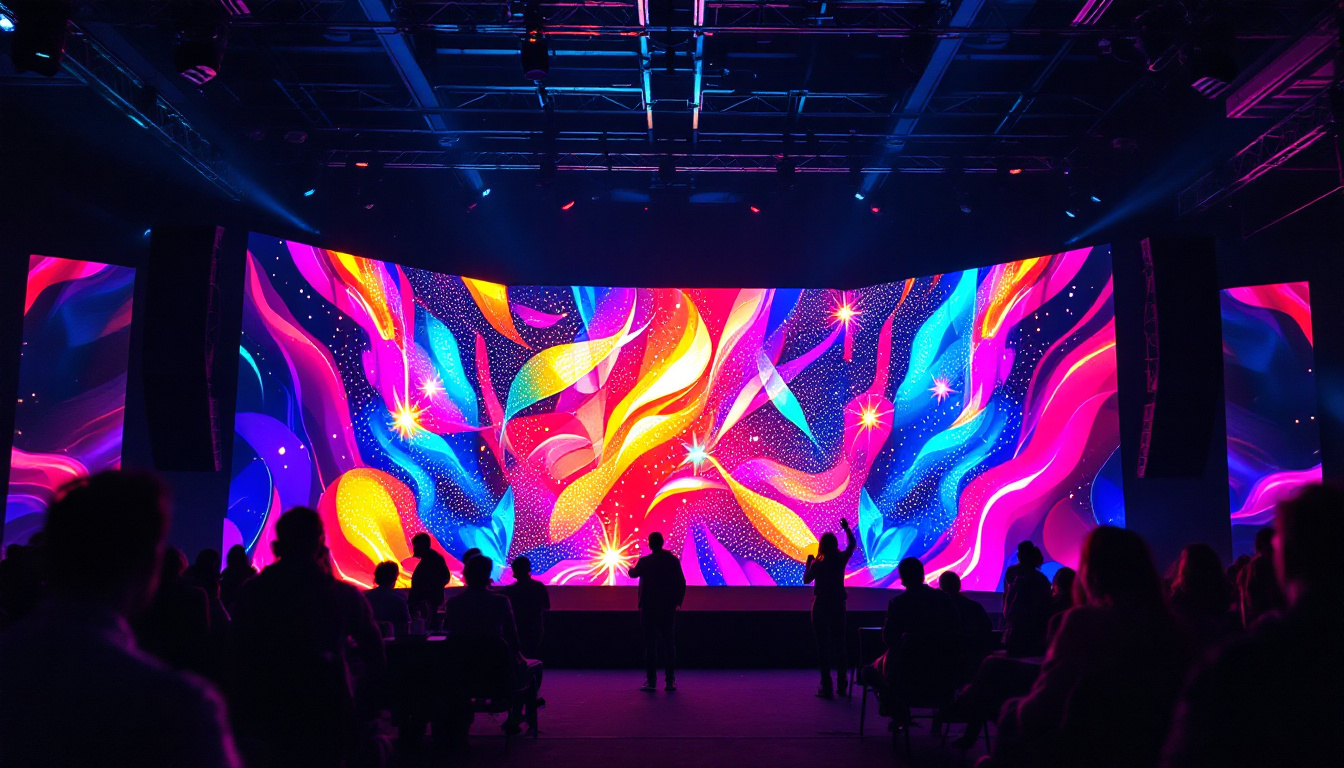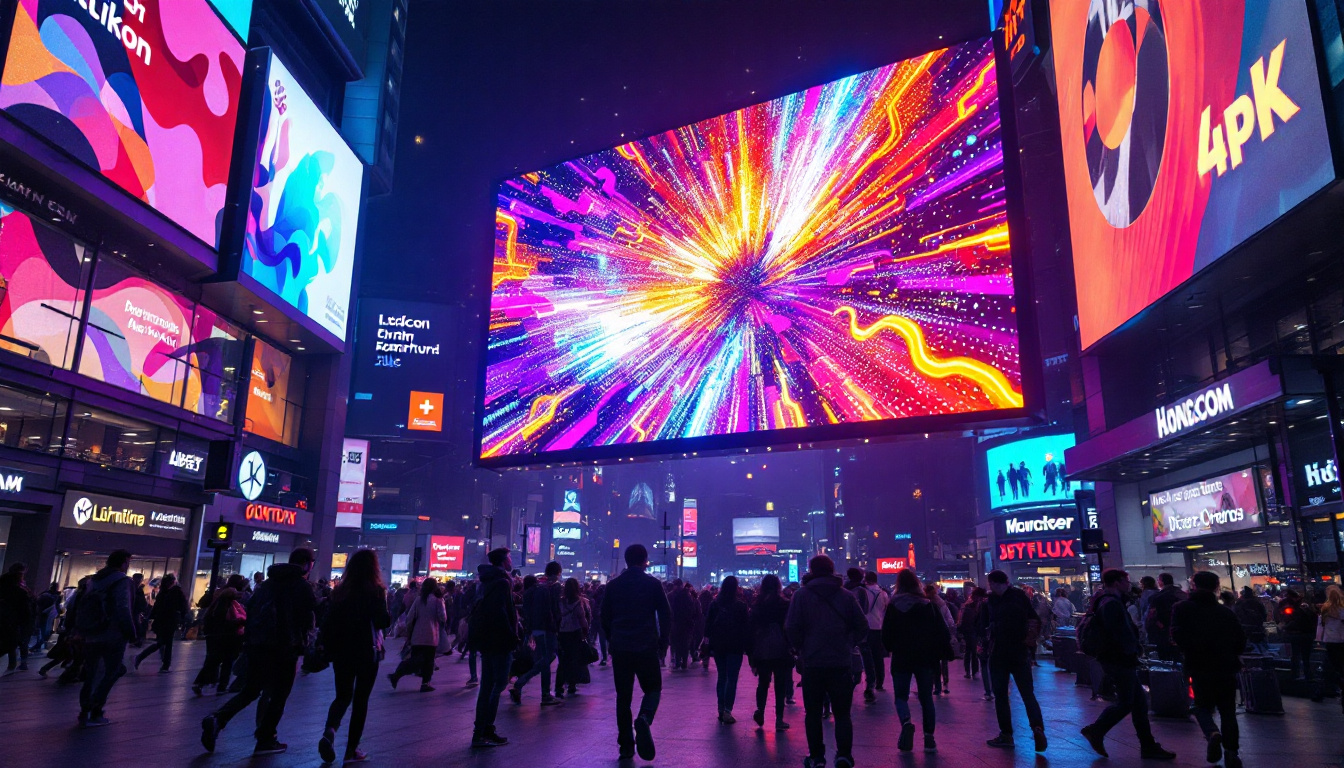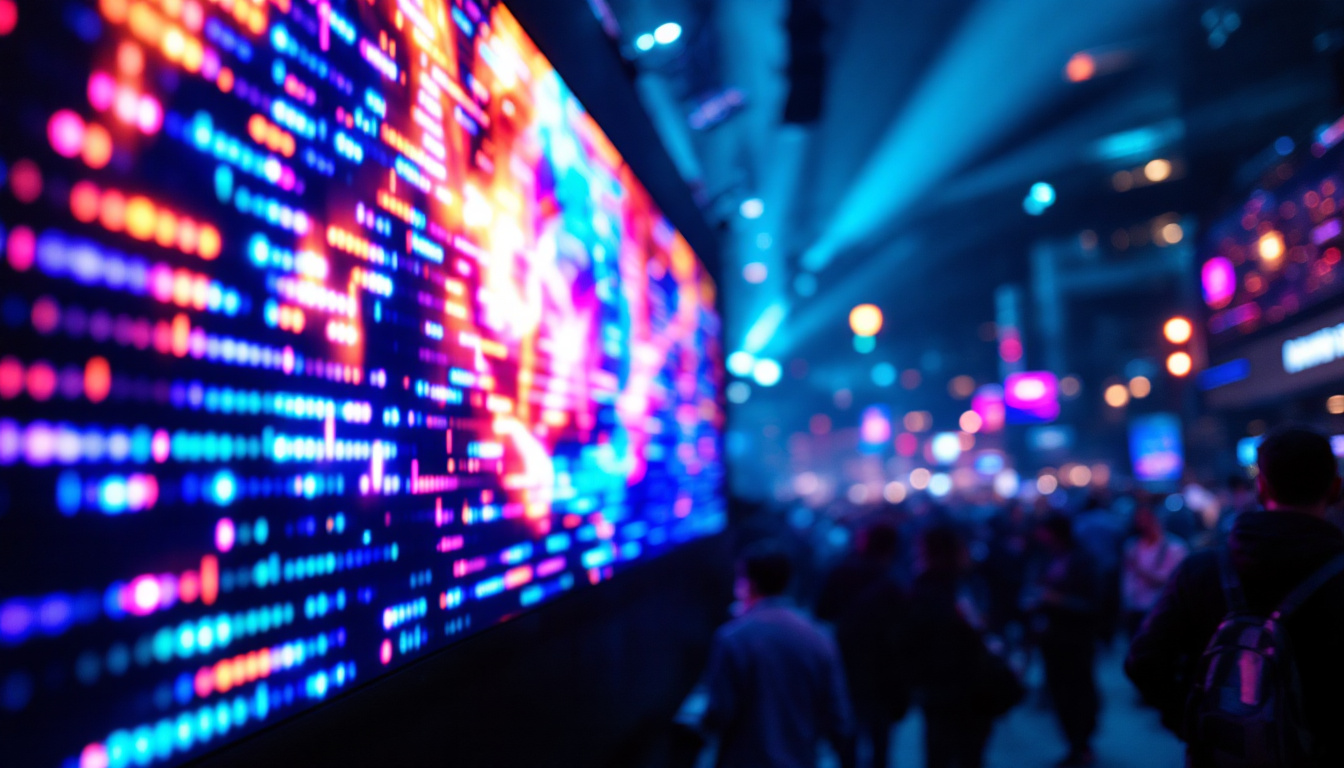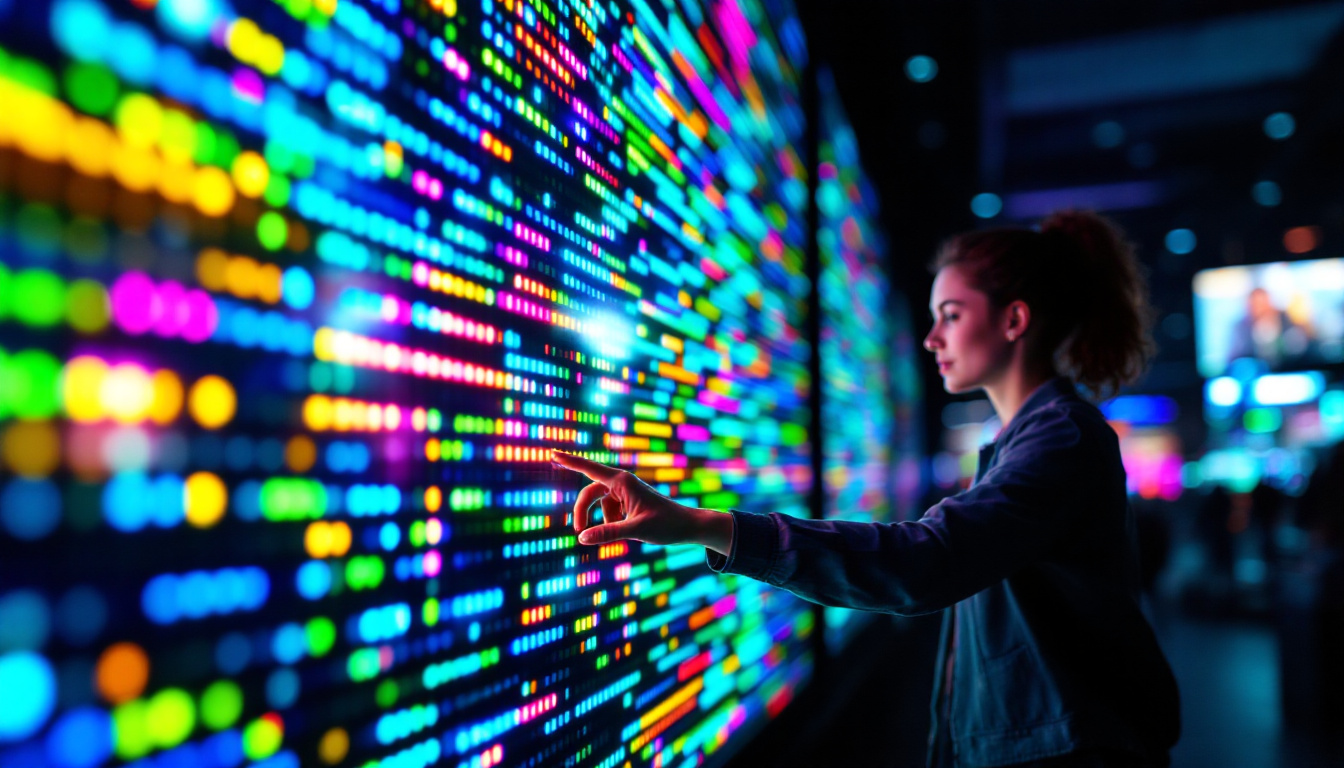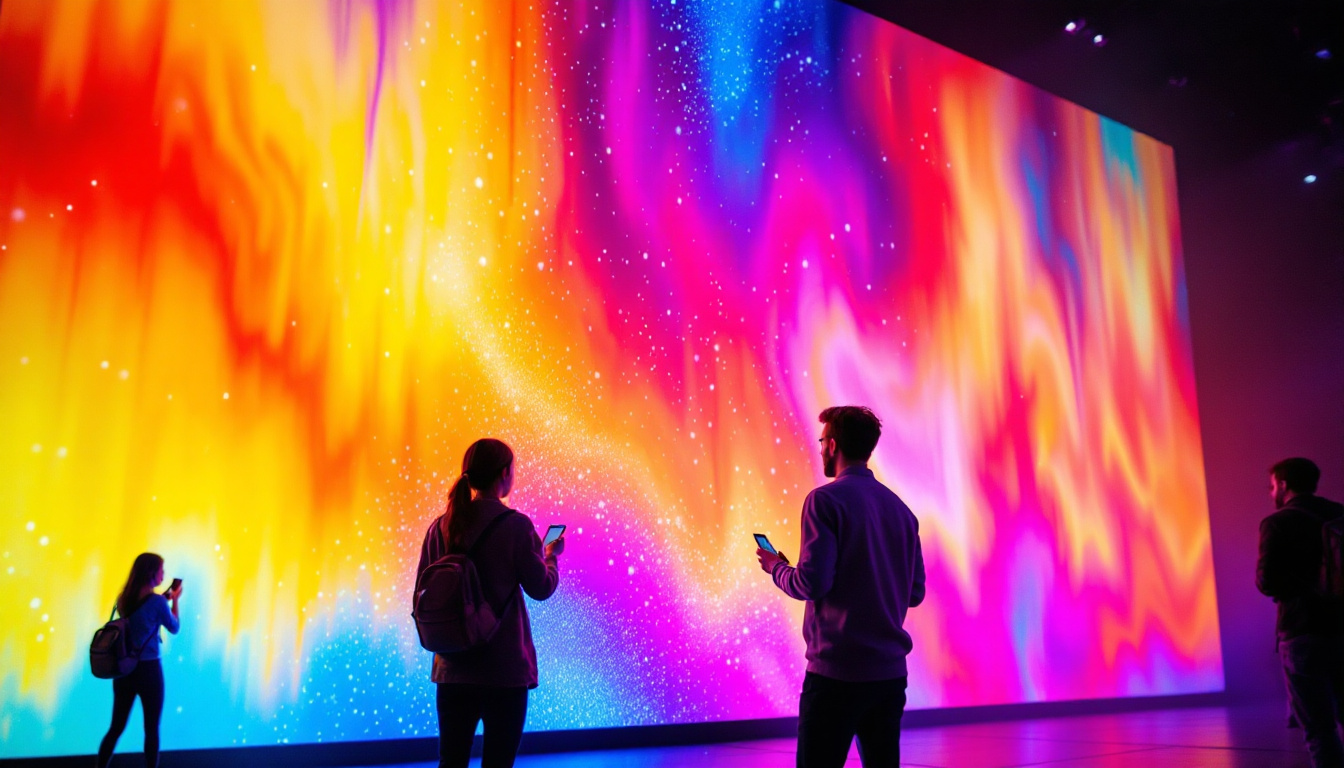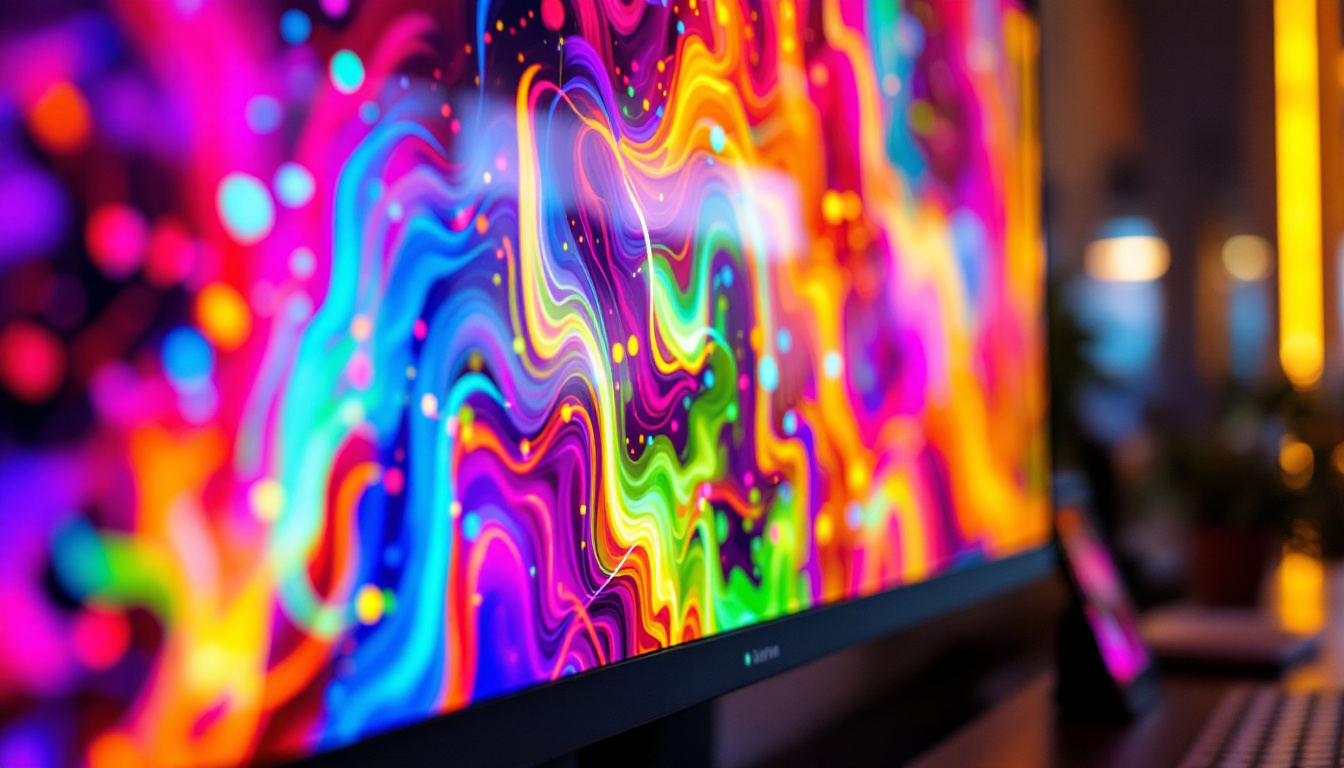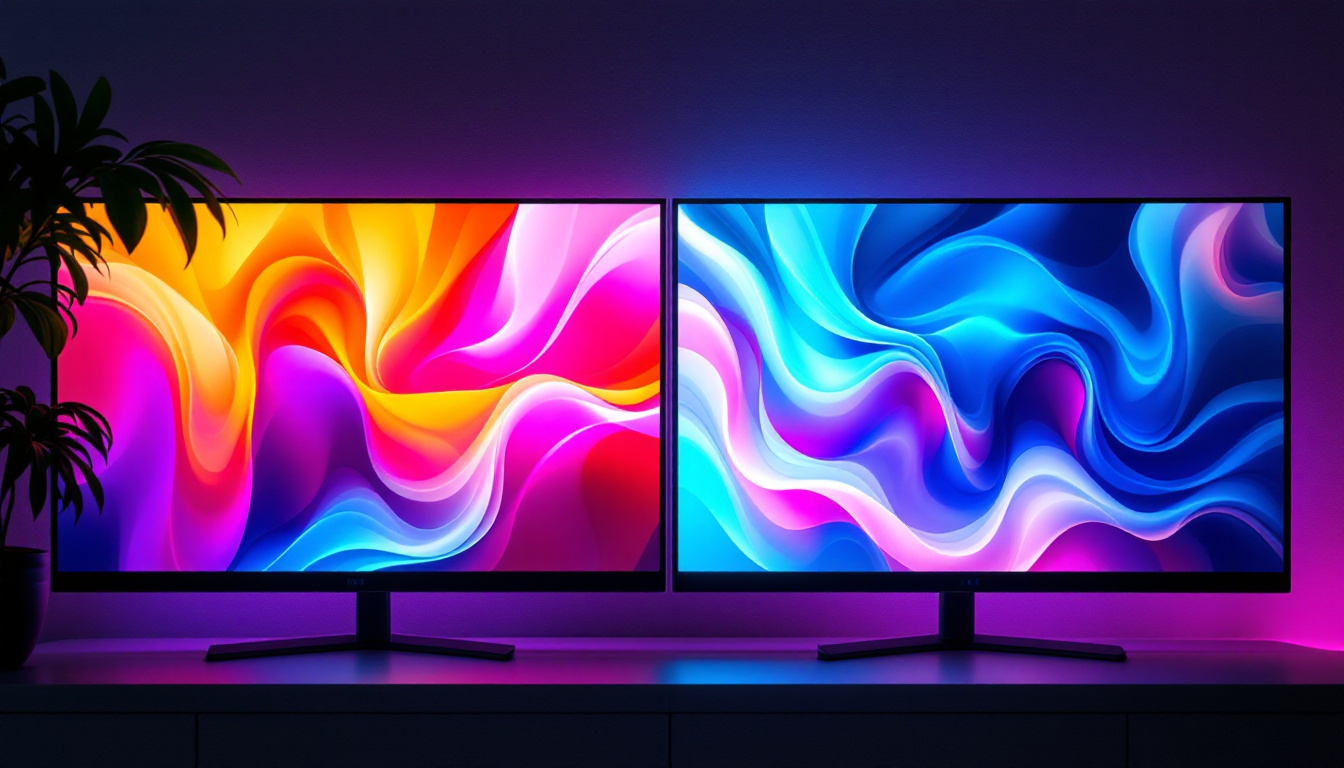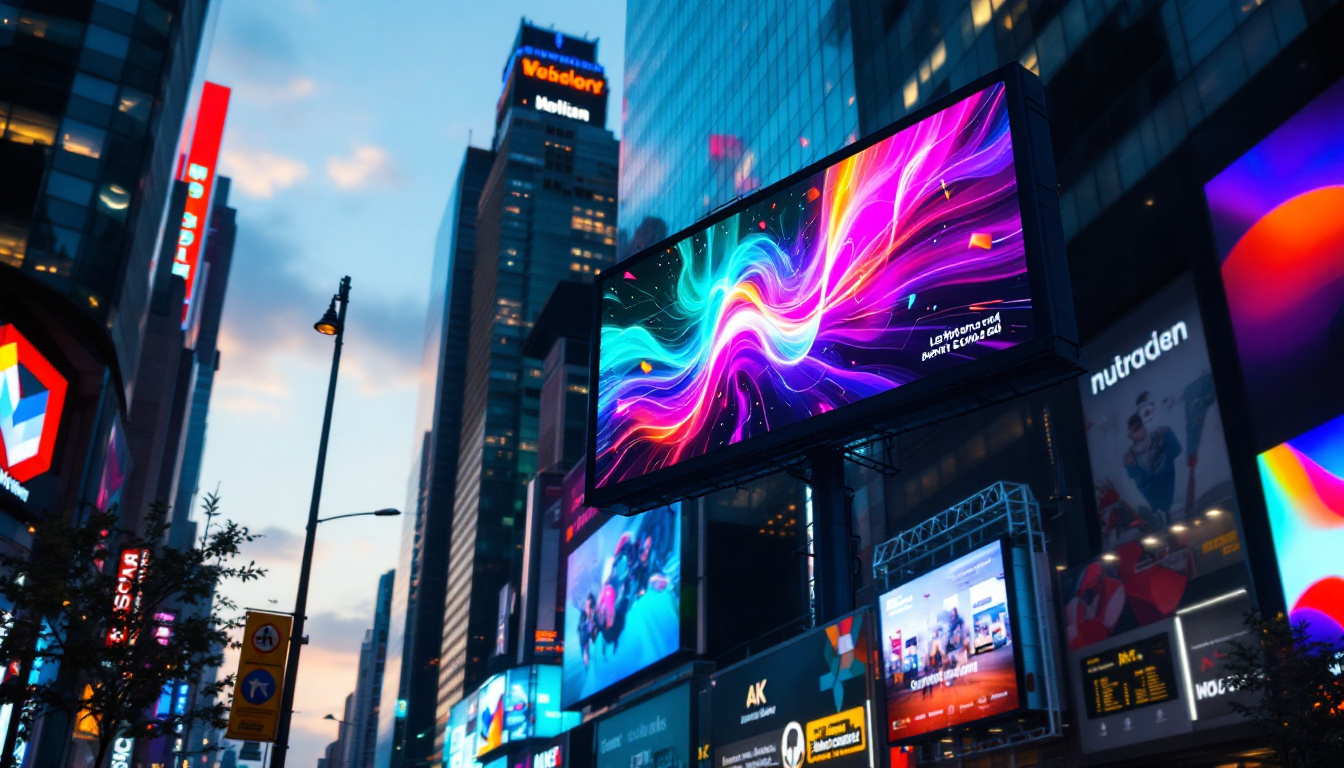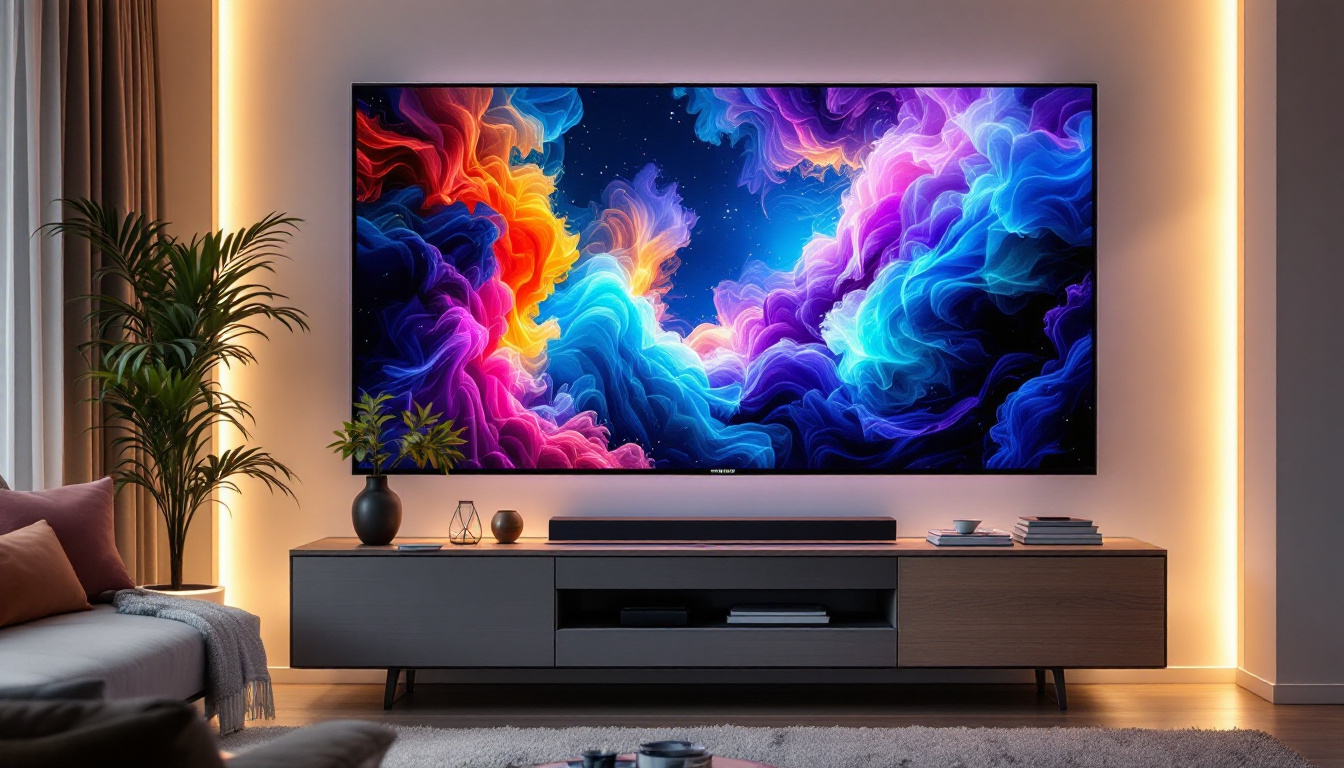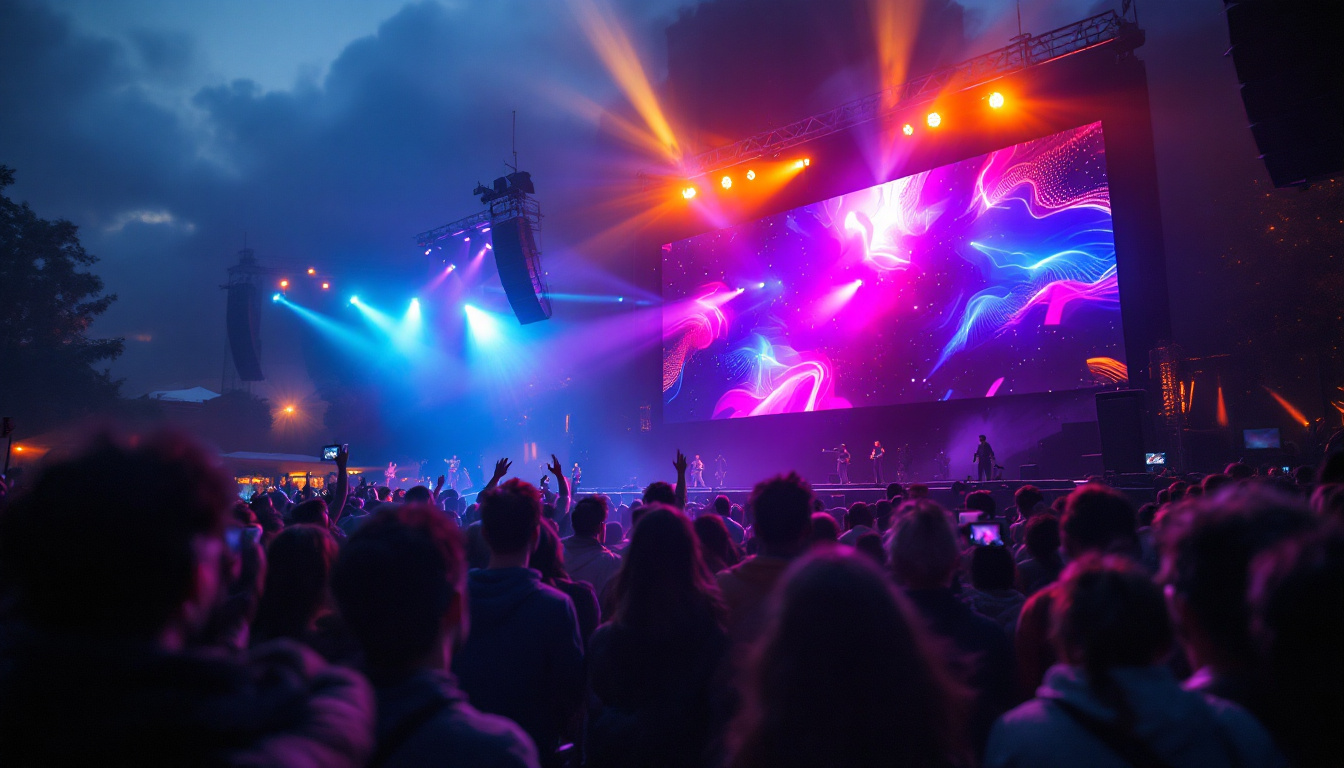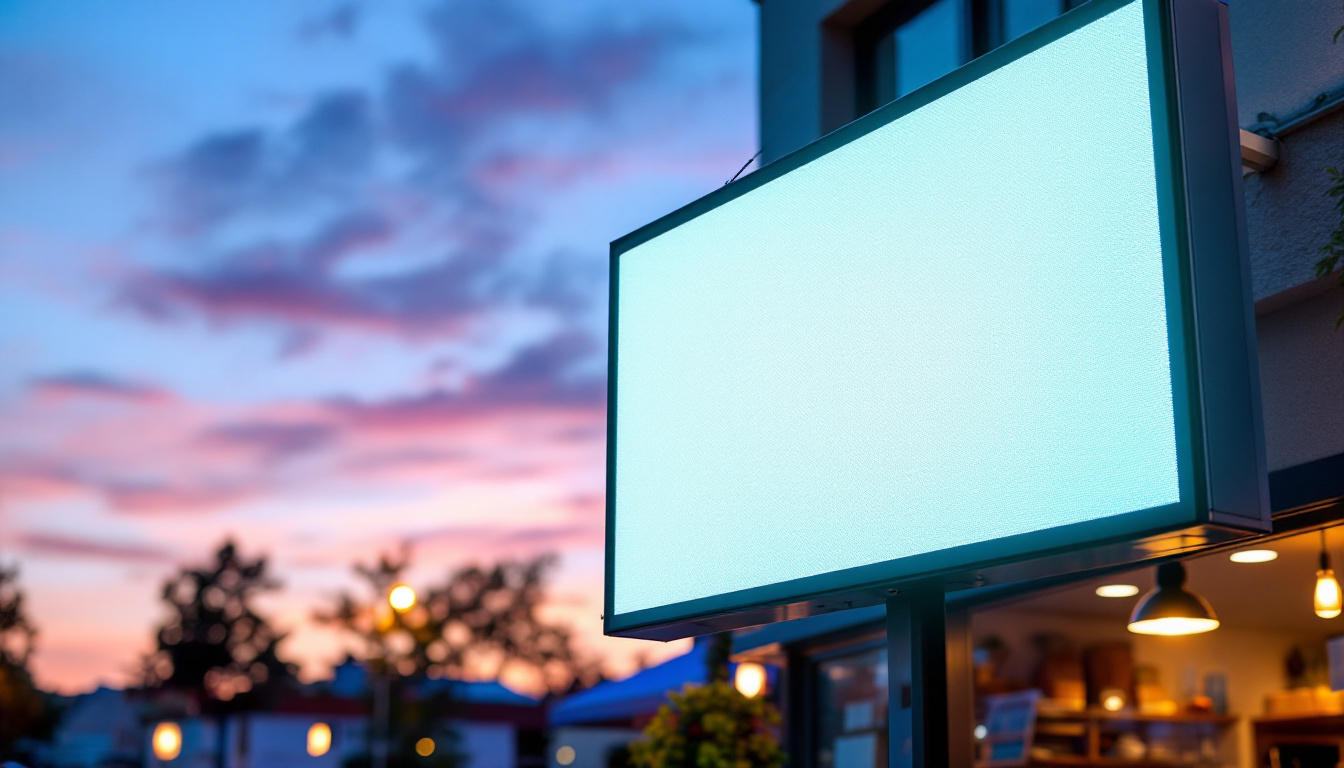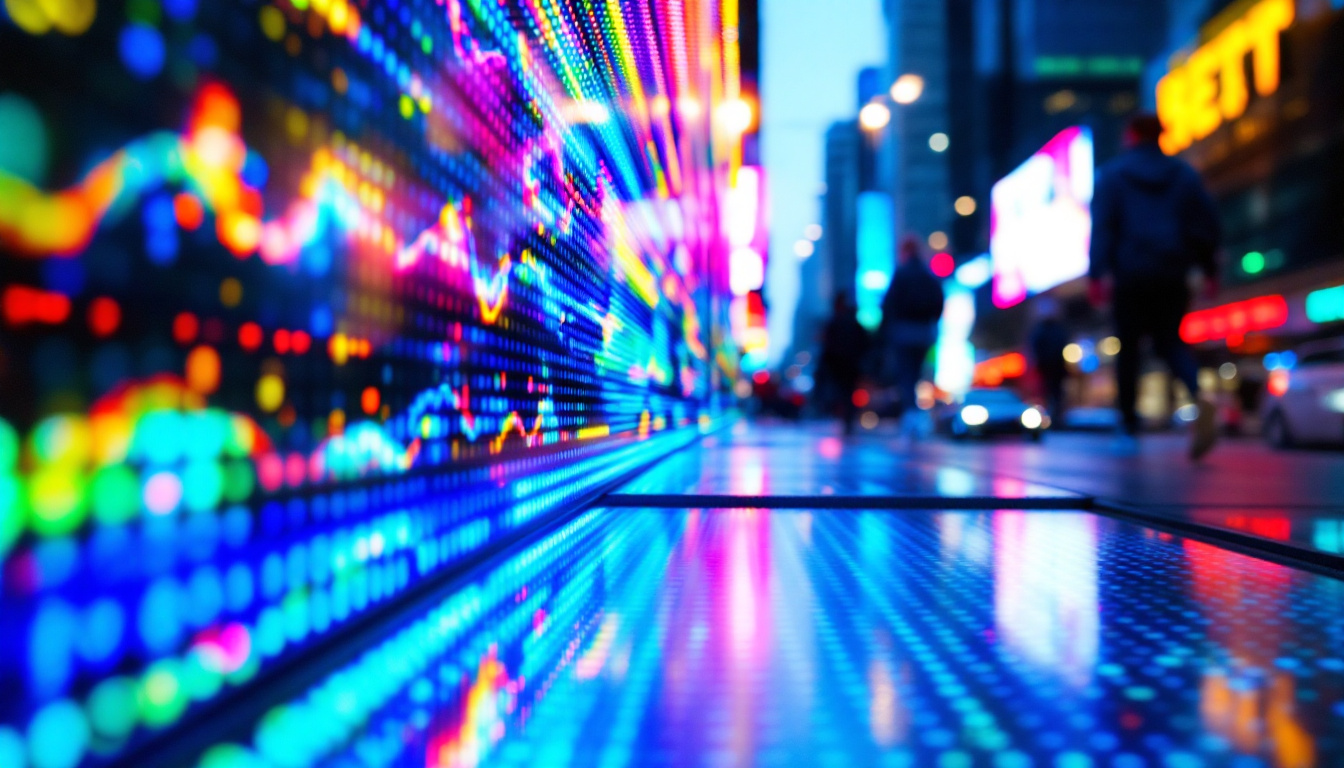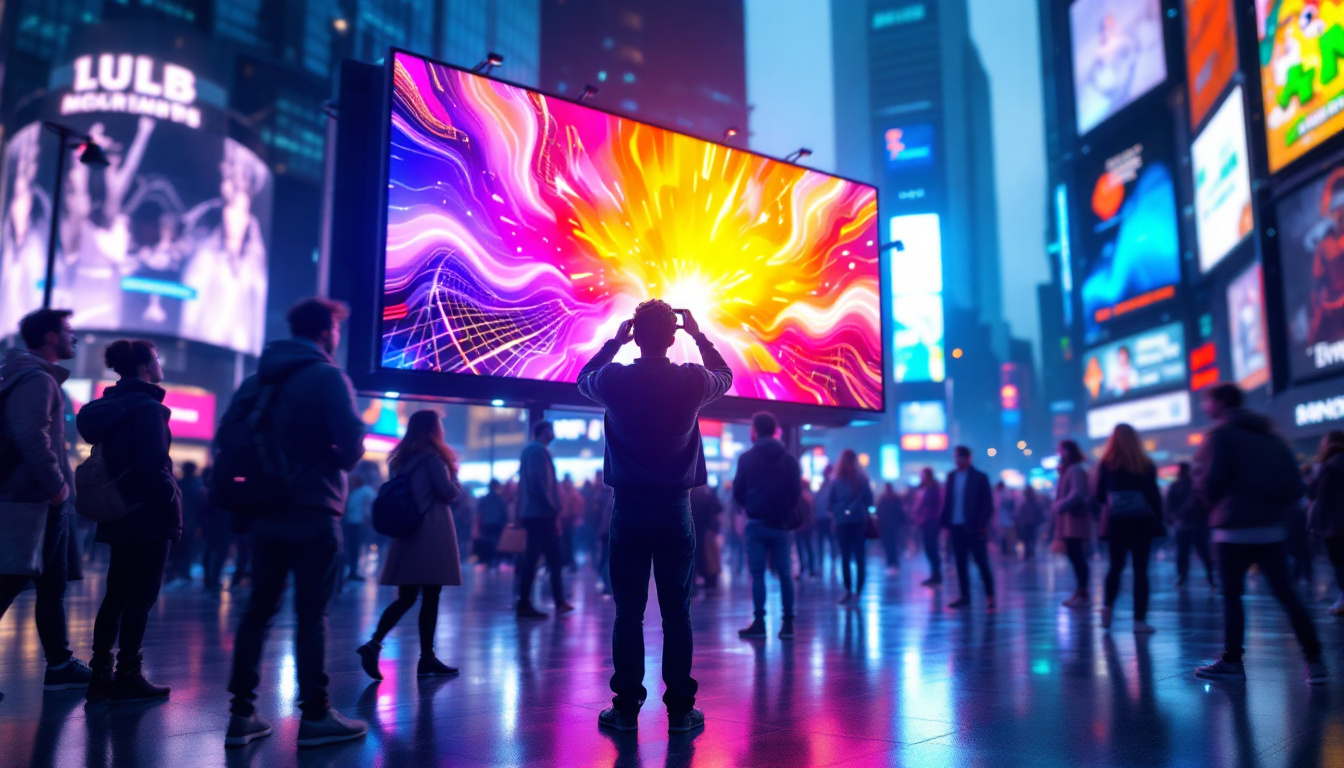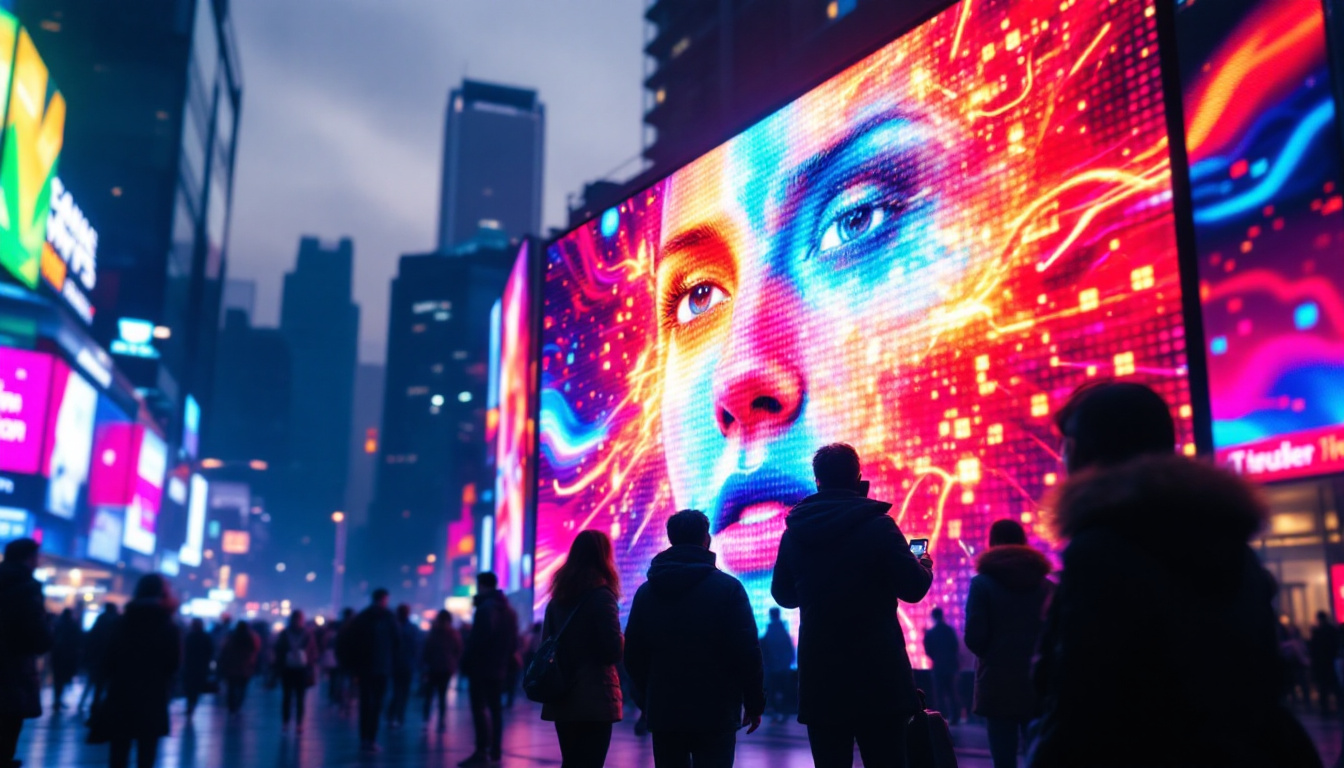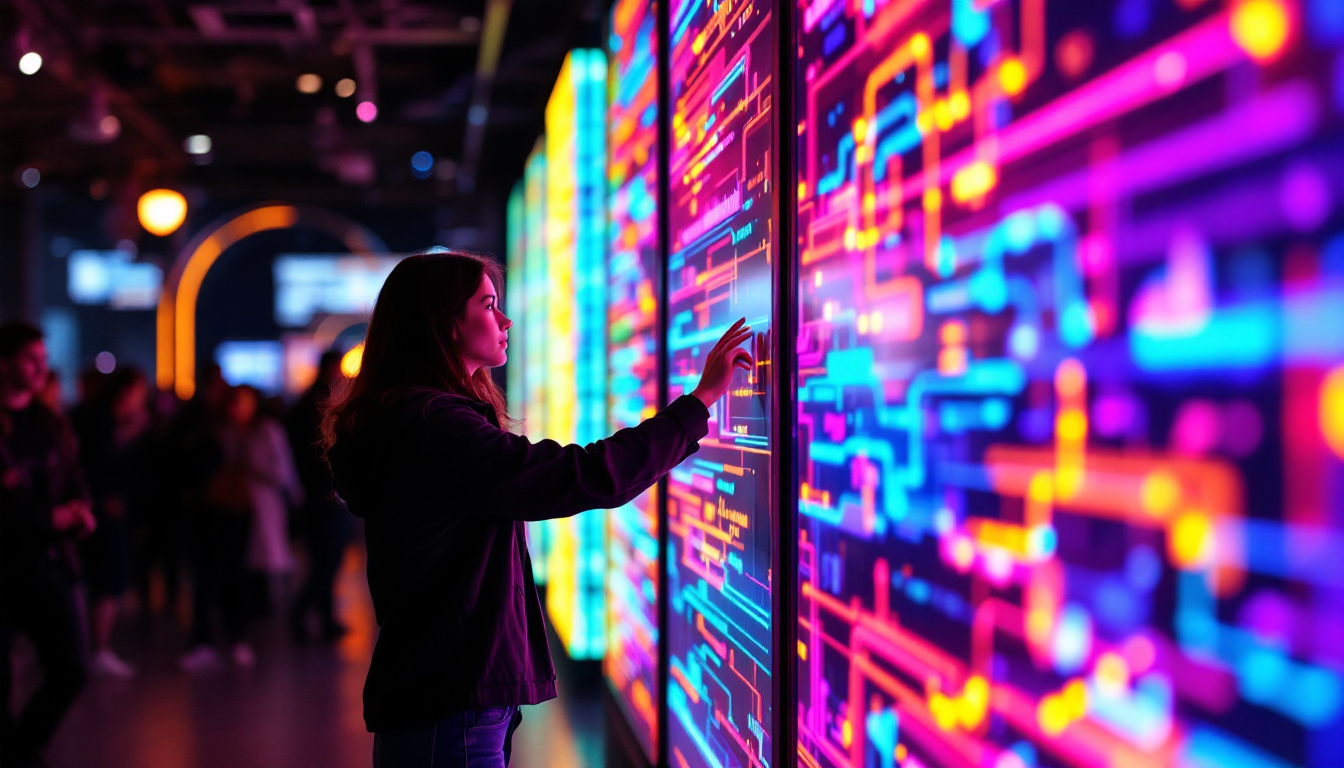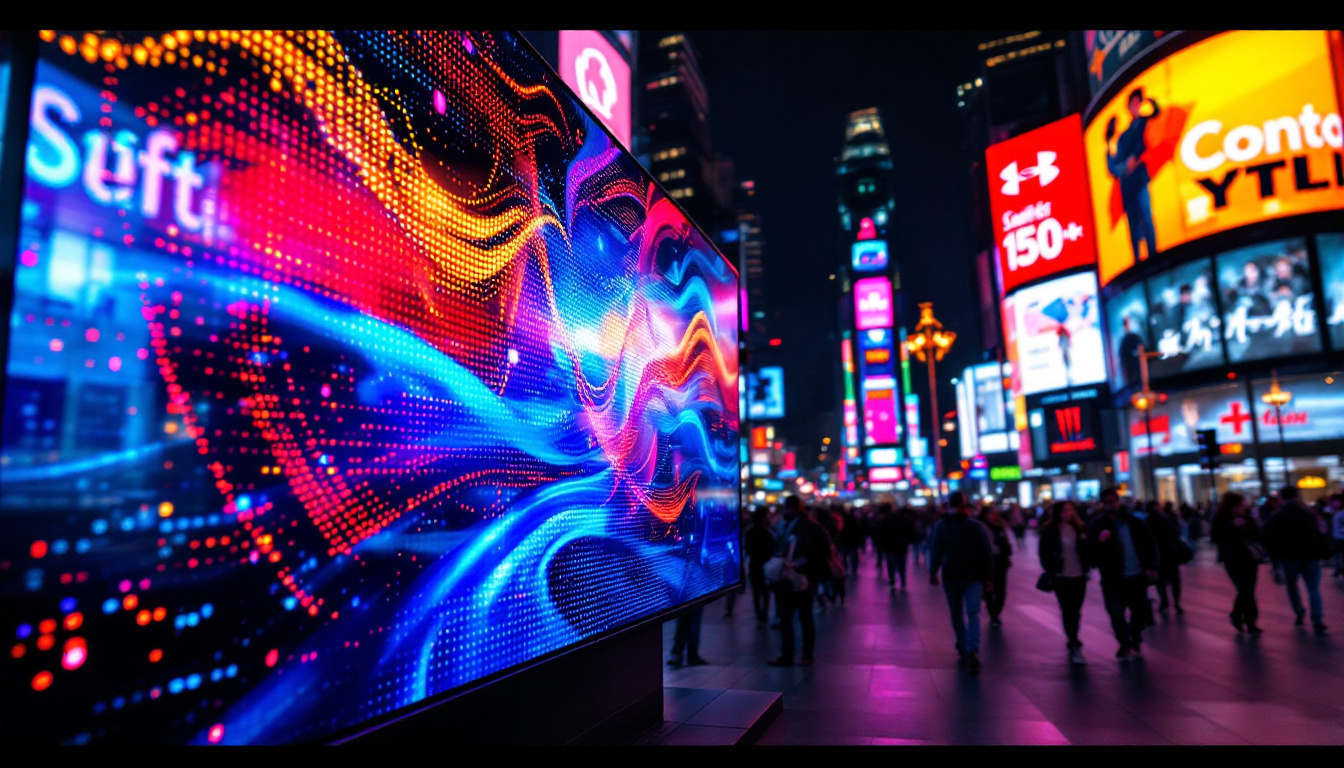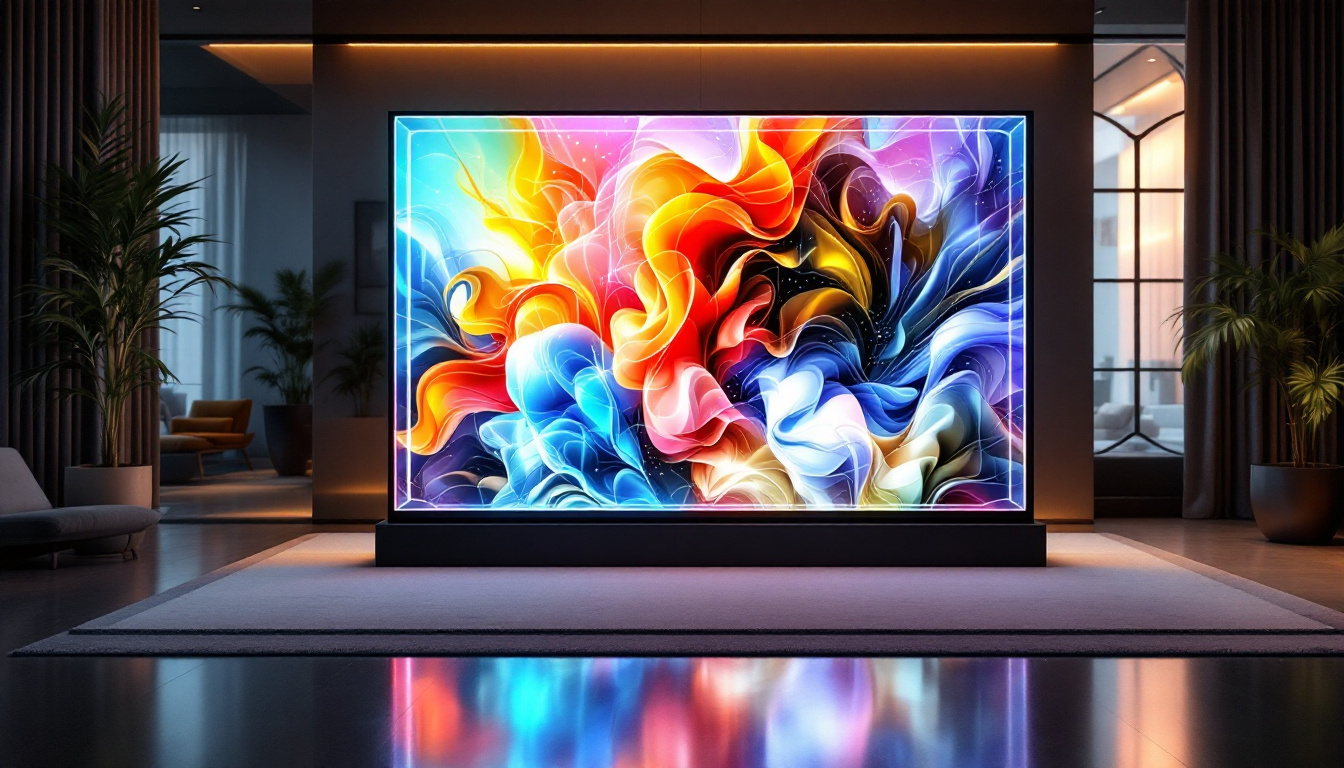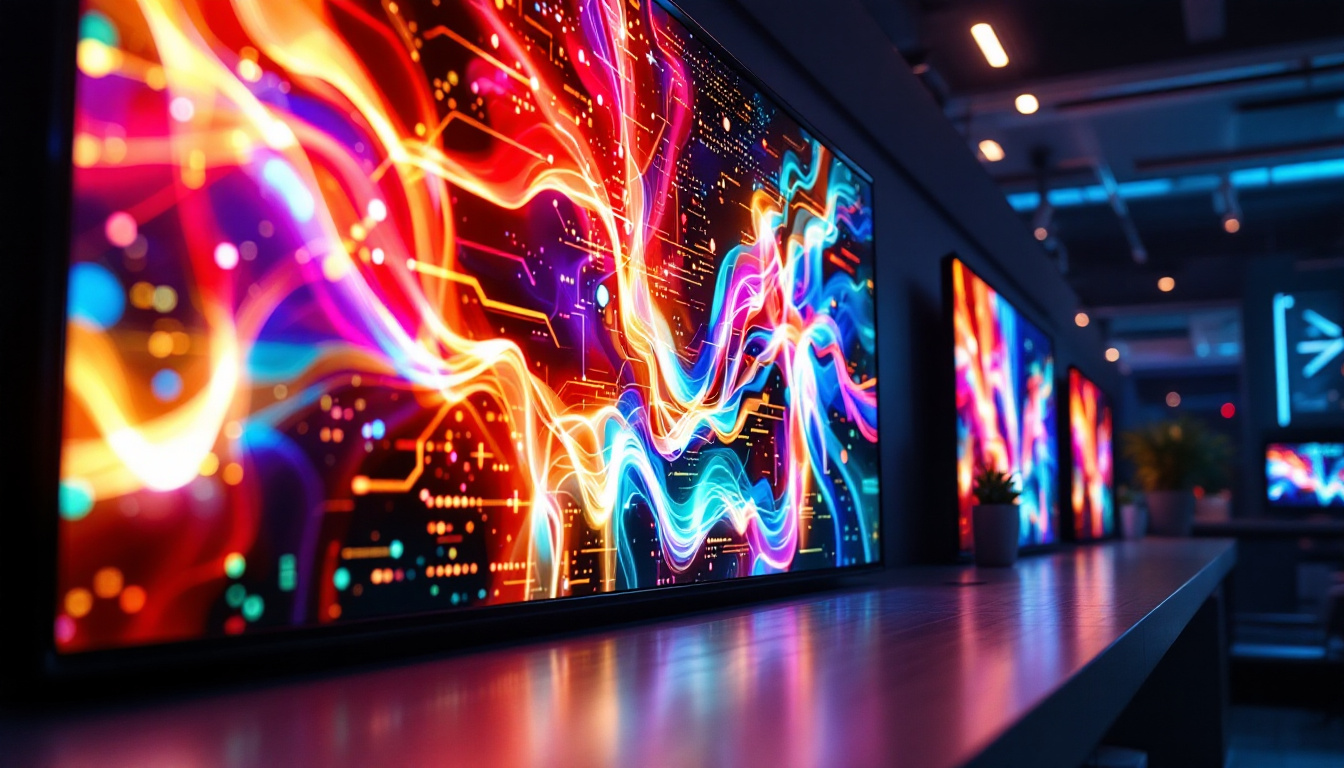In the rapidly evolving world of technology, businesses are increasingly leveraging audio and video systems to enhance communication, marketing, and overall operational efficiency. Among the various components of these systems, LED displays have emerged as a pivotal element. This article delves into the significance of LED displays in business audio-video systems, exploring their types, benefits, and applications.
Understanding LED Displays
LED (Light Emitting Diode) displays are a type of flat panel display that utilizes LEDs as pixels for video display. Unlike traditional LCD screens, LED displays offer superior brightness, contrast, and energy efficiency. They are versatile and can be used in various settings, from retail environments to corporate boardrooms. The increasing popularity of LED technology can be attributed to its ability to produce vivid colors and sharp images, which significantly enhance the viewer’s experience. With advancements in technology, LED displays have become more affordable and accessible, making them a common choice for both businesses and consumers alike.
How LED Displays Work
LED displays function by illuminating individual pixels with light-emitting diodes. Each pixel consists of red, green, and blue (RGB) subpixels, which combine to create a wide spectrum of colors. This technology allows for vibrant images and videos, making it an ideal choice for dynamic content presentation. The rapid response time of LEDs also means that they can display fast-moving content without blurring, making them perfect for sports events or action-packed videos. Furthermore, the energy efficiency of LED displays reduces operational costs, as they consume less power compared to older technologies.
The modular nature of LED displays enables them to be configured in various sizes and shapes, accommodating different business needs. Whether a small digital sign or a massive video wall, LED technology can be tailored to fit any application. This flexibility not only allows for creative installations but also means that businesses can scale their display solutions as their needs evolve. Additionally, many LED displays come equipped with smart technology, allowing for remote management and real-time content updates, enhancing their utility in fast-paced environments.
Types of LED Displays
There are several types of LED displays available, each designed for specific applications:
- Indoor LED Displays: These displays are typically used in environments such as conference rooms, retail stores, and event venues. They offer high resolution and brightness, ensuring clear visibility even in well-lit spaces. Indoor displays often feature advanced color calibration technologies, providing consistent and accurate color reproduction that is essential for professional presentations.
- Outdoor LED Displays: Built to withstand the elements, outdoor LED displays are larger and brighter, making them perfect for advertising billboards and public announcements. They are designed to be visible from a distance and under direct sunlight. Many outdoor displays also come with weatherproof casings and enhanced cooling systems to ensure longevity and performance in various weather conditions.
- Transparent LED Displays: This innovative technology allows for displays that maintain visibility through the screen. They are ideal for retail environments where product visibility is crucial, as they can showcase advertisements without obstructing the view of the merchandise. Transparent displays can also create immersive experiences in museums and exhibitions, allowing viewers to engage with content while still seeing the physical objects on display.
Benefits of LED Displays in Business
LED displays offer numerous advantages that make them an attractive choice for businesses looking to enhance their audio-video systems. These benefits extend beyond mere aesthetics, impacting functionality and engagement.
Enhanced Visibility and Engagement
One of the most significant benefits of LED displays is their brightness and clarity. Unlike traditional displays, which may struggle in bright environments, LED technology ensures that content remains visible and engaging. This is particularly important for businesses that rely on attracting foot traffic, such as retail stores and restaurants.
Moreover, the ability to display dynamic content—such as videos, animations, and real-time information—captures attention more effectively than static signs. This engagement can lead to increased customer interaction and higher conversion rates.
Energy Efficiency and Cost Savings
LED displays are known for their energy efficiency, consuming significantly less power than traditional display technologies. This reduced energy consumption translates to lower operational costs, making them a sustainable choice for businesses. Over time, the savings from energy bills can offset the initial investment in the technology.
Additionally, LED displays have a longer lifespan compared to other display types. With proper maintenance, they can last over 100,000 hours, reducing the need for frequent replacements and further contributing to cost savings.
Versatility and Customization
LED displays are incredibly versatile, allowing businesses to customize their setup according to specific needs. They can be arranged in various configurations, from simple single-screen setups to elaborate video walls that create immersive experiences. This flexibility makes them suitable for various applications, including presentations, advertising, and event broadcasting.
Furthermore, content management systems enable businesses to update and change the displayed content easily. This adaptability allows for real-time promotions, announcements, and event-driven messaging, keeping the audience engaged and informed.
Applications of LED Displays in Business
The applications of LED displays in business are vast and varied. From enhancing customer experience to improving internal communications, these displays play a crucial role across different sectors.
Retail and Advertising
In the retail sector, LED displays are a powerful tool for advertising and branding. They can showcase promotions, new products, and engaging content that attracts customers. The dynamic nature of LED displays allows retailers to change their messaging frequently, adapting to trends and consumer preferences.
Outdoor LED displays, in particular, serve as eye-catching billboards that can reach a wide audience. Their ability to display high-resolution images and videos makes them ideal for capturing attention in busy urban areas.
Corporate Communications
Within corporate environments, LED displays facilitate effective communication. They can be used in conference rooms for presentations, displaying data, and sharing information with attendees. The clarity and vibrancy of LED displays enhance the overall presentation experience, making it easier for audiences to stay engaged.
Moreover, digital signage powered by LED technology can be employed in lobbies and waiting areas to convey important information, such as company news, upcoming events, and even social media feeds. This not only keeps visitors informed but also reinforces the company’s brand identity.
Event Management
For event organizers, LED displays are indispensable. They can be utilized for stage backdrops, live streaming, and displaying real-time information such as schedules and speaker details. The flexibility of LED technology allows for creative setups that enhance the overall atmosphere of the event.
Additionally, LED displays can be integrated with interactive technologies, allowing attendees to engage with the content in real time. This interactivity can elevate the attendee experience, making events more memorable and impactful.
Choosing the Right LED Display for Your Business
Selecting the appropriate LED display for a business requires careful consideration of various factors. Understanding the specific needs and goals of the organization is essential to making an informed decision.
Assessing Your Needs
The first step in choosing an LED display is to assess the intended use. Will it be used primarily for advertising, internal communications, or event management? Understanding the primary function will help narrow down the options.
Additionally, consider the location of the display. Indoor displays require different specifications than outdoor displays, particularly in terms of brightness and weather resistance. Evaluating the environment will ensure that the chosen display performs optimally.
Determining Size and Resolution
The size and resolution of the LED display are critical factors that influence visibility and engagement. Larger displays are generally more suitable for outdoor environments or large venues, while smaller displays may suffice for intimate settings.
Resolution is equally important, as it determines the clarity of the content. Higher resolution displays provide sharper images and text, making them ideal for detailed graphics and videos. Businesses should balance size and resolution based on their budget and specific needs.
Budget Considerations
Investing in LED displays can be a significant financial commitment, so it is essential to establish a budget. While high-quality displays may come with a higher price tag, their long-term benefits in terms of energy savings and durability can justify the investment.
It is also wise to consider ongoing costs, such as maintenance and content management. Understanding the total cost of ownership will help businesses make a more informed decision and ensure that they choose a solution that aligns with their financial goals.
Future Trends in LED Display Technology
The LED display technology landscape is continually evolving, with new advancements enhancing performance and capabilities. Staying informed about these trends can help businesses leverage the latest innovations to gain a competitive edge.
Advancements in Resolution and Clarity
As technology progresses, LED displays are becoming increasingly capable of delivering higher resolutions and improved clarity. The advent of 4K and even 8K displays is setting new standards for visual quality, allowing for stunningly detailed images and videos.
This trend is particularly beneficial for industries that rely heavily on visual content, such as entertainment, advertising, and design. As resolution improves, businesses can create more immersive experiences that captivate their audiences.
Integration with Smart Technologies
The integration of LED displays with smart technologies is another exciting trend. This includes the use of artificial intelligence (AI) and the Internet of Things (IoT) to create more interactive and responsive displays. For instance, smart displays can analyze viewer engagement and adjust content in real time based on audience reactions.
This level of interactivity enhances the user experience and allows businesses to tailor their messaging to meet the needs of their audience more effectively.
Sustainability and Eco-Friendly Solutions
As businesses become more environmentally conscious, the demand for sustainable technologies is on the rise. LED displays are already more energy-efficient than traditional options, but future developments are likely to focus on eco-friendly materials and manufacturing processes.
Adopting sustainable practices not only benefits the environment but also enhances a company’s brand image, appealing to consumers who prioritize sustainability in their purchasing decisions.
Conclusion
LED displays have revolutionized the way businesses communicate and engage with their audiences. Their versatility, energy efficiency, and ability to deliver dynamic content make them an invaluable asset in modern audio-video systems. As technology continues to advance, the potential applications and benefits of LED displays will only expand, offering businesses new opportunities to enhance their operations and connect with customers.
By understanding the various types of LED displays, their benefits, and how to choose the right one, businesses can make informed decisions that align with their goals. Embracing this technology not only improves communication and marketing efforts but also positions businesses for success in an increasingly digital world.
Discover LumenMatrix LED Display Solutions
Ready to elevate your business’s audio-video capabilities with cutting-edge LED display technology? Look no further than LumenMatrix, a leader in innovative LED solutions that transform visual communication. From vibrant Indoor LED Wall Displays to robust Outdoor LED Wall Displays, and from versatile Vehicle LED Displays to engaging LED Sports Displays, LumenMatrix offers a comprehensive range of products designed to captivate your audience and amplify your message. Experience the future of digital signage with our Custom, All-in-One, and Transparent LED Displays. Check out LumenMatrix LED Display Solutions today and see how we can help you create unforgettable visual experiences.

